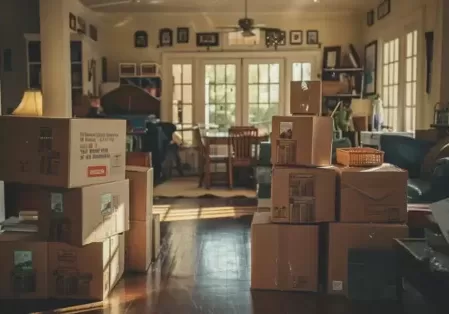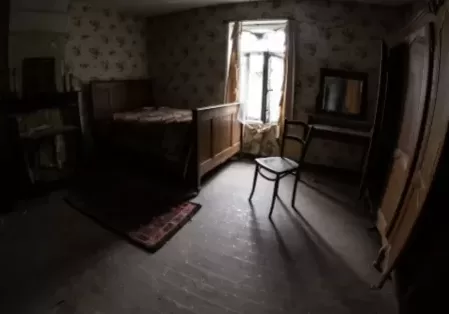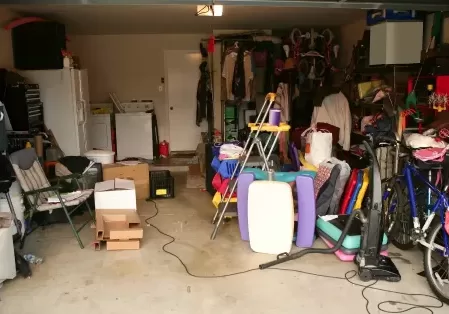Do I Need a Permit to Tear Down a Shed? Key Rules to Know
Imagine you’re staring at your old, rickety shed. It’s leaning more than it should, the paint’s peeling like a bad sunburn, and you’re convinced the local raccoons have claimed it as their clubhouse. It’s time to tear down your shed to go.
But wait—can you just grab a sledgehammer and start swinging? Not so fast. Many homeowners run into confusion when it comes to permits for small demolition services like sheds. Do you need one? What happens if you skip the paperwork? And where do you even start?
Understanding local regulations can save you from surprise fines, delays, or even safety hazards. In this guide, we’ll walk you through everything you need to know: when permits are required, how to get one, and how to make the whole process smooth and stress-free.
What Determines If You Need a Permit to Tear Down a Shed?
Before you swing that hammer, it’s essential to know what factors determine if a permit is required for shed dismantling.
Size of Your Shed
- Local authorities often set permit thresholds based on the shed size square footage.
Location
Where your shed is located matters.
- Is it close to property lines? Utilities? Public spaces?
- Zoning laws might need permits if the shed’s location affects neighboring properties or underground infrastructure.
Purpose of Demolition
- If you’re tearing down a shed due to hazardous waste (like asbestos in older structures), regulations are stricter, and special permits are often required.
- Similarly, if demolition is part of a larger renovation or construction project, you’ll likely need a permit.
Local Regulations
- Rules vary by city, county, and even HOA guidelines. Contact your local government or visit their website to confirm requirements.
How to Check If You Need a Permit for Shed Demolition
Figuring out if you need a permit doesn’t have to be complicated. Follow these simple steps.
Step 1: Contact Your Local Building Department
Start by finding your city or county’s building department online or by phone.
Ask these key questions:
- What’s the size threshold for requiring a demolition permit?
- Are there special considerations for properties in historic districts?
- Are there additional requirements if the shed is near utilities or property lines?
Step 2: Review Local Ordinances or Codes Online
- Most cities publish their building codes online. Search for terms like “shed demolition permit” or “demolition guidelines.”
- It is essential to check for zoning restrictions that could apply to your property.
Step 3: Consult with Your Homeowners’ Association (HOA)
- If you’re in an HOA, don’t skip this step. HOAs may have separate rules about shed removal.
- Request written confirmation to avoid any future disputes.
What Happens If You Don’t Get a Permit?

While an average shed removal cost ranges from $200 to $3,500 depending on several factors, skipping the permit process might feel tempting, but the consequences can be costly and stressful. Here’s what could happen:
- Fines and Penalties: Many cities impose fines for unpermitted demolition. These can range from $100 to thousands of dollars, depending on local laws.
- Legal Issues: Ignoring permit requirements might result in a stop-work order, forcing you to halt demolition. You may also face legal action.
- Resale Complications: When selling your property, unpermitted work can raise red flags during inspections, delaying or even jeopardizing the sale.
- Safety Concerns: Without permits, you may overlook safety risks like underground utilities, structural hazards, or proper disposal methods.
- Paying Unnecessary Taxes: Without a permit, sheds over a certain size might still be taxed as part of your property. A permit ensures the shed is officially removed from tax assessments.
How to Apply for a Permit to Tear Down a Shed
Getting a permit is a straightforward process if you’re prepared. Here’s what to do:
Step 1: Gather the Required Documents
Most building departments require:
- Property details (address, proof of ownership).
- Shed dimensions and construction materials.
- Demolition plans, including methods and safety precautions.
Step 2: Submit Your Application
- Submit your permit application online or in person.
- Be prepared to pay a small fee, typically ranging from $50 to $200, depending on the project’s scope.
Step 3: Schedule an Inspection (If Required)
- Some areas require inspections before or after demolition to ensure safety and compliance.
- Inspectors may check for proper waste disposal or verify that no hazardous materials are present.
Tips for Safe and Smooth Demolition
Whether you DIY or hire a pro, here are tips to make the process safer and easier:
Prepare the Site
- Clear the area around the shed to ensure there’s enough space to work safely.
- Check for hazards like electrical wiring, gas lines, or overhanging branches.
Use the Right Tools and Safety Gear
- Tools: Crowbars, sledgehammers, drills, and power saws make the job efficient.
- Safety Gear: Gloves, safety goggles, dust masks, and sturdy boots are non-negotiable for personal protection.
Plan for Waste Disposal
Options for shed material disposal include:
- Renting a small dumpster for debris.
- Hauling materials to a landfill or recycling center.
- Recycling wood, metal, or concrete parts to minimize waste.
For a step-by-step guide to streamline your project, check out this detailed resource on how to demolish a shed.
When to Hire Professionals for Shed Demolition
While DIY demolition projects can be rewarding, tearing down a shed often comes with challenges designed to meet your needs that require professional expertise. A professional demolition team can save time, ensure safety, and help you navigate tricky regulations. Here’s when it makes sense to call in the pros:
1. Complex or Large Structures
If your shed is more than a simple wooden frame, it’s time to reconsider DIY. Sheds with electricity, plumbing connections, or heavy foundations can present risks and challenges for untrained individuals.
- Electrical Wiring: Improper handling of live wires can result in electrocution or fire hazards. Licensed professionals can disconnect wiring safely and ensure compliance with electrical codes.
- Plumbing Connections: If the shed has running water or pipes, incorrectly capping or removing plumbing can lead to leaks or property damage.
- Heavy Foundations: Concrete or reinforced foundations require specialized equipment like jackhammers or mini-excavators to remove safely.
2. Hazardous Materials
Older sheds, particularly those built before the 1980s, may contain asbestos, lead-based paint, or mold, all of which are hazardous when disturbed. These materials require careful identification, removal, and disposal.
- Asbestos: Found in older roofing shingles, siding, and insulation, asbestos fibers can cause severe respiratory issues when inhaled.
- Lead Paint: Lead exposure is dangerous for pets and humans, especially children. Chipping, sanding, or removing lead paint without proper equipment can release harmful particles into the air.
- Mold: Damp or neglected sheds often harbor mold, which can trigger allergies or respiratory problems if incorrectly handled.
3. Time and Convenience
Demolishing a shed is no small task—it involves planning, tools, cleanup, and disposal. Hiring professionals is the best option if you’re short on time, tools, or energy.
- No Tools? No Problem: Shed demolition requires equipment like crowbars, sledgehammers, power saws, and dumpsters for waste disposal. Renting or buying these tools can quickly add up.
- Save Your Weekends: A team of demolition professionals can complete the job in a day or two, freeing up your time for more important tasks (or simply relaxing).
- Leave the Cleanup to Them: Shed demolition isn’t just about tearing it down; it’s about properly disposing of the materials. Pros will handle debris junk removal, leaving your property clean and ready for its next purpose.
4. Compliance and Permits
Navigating local building codes and obtaining the right permits can feel like a paperwork nightmare. Professionals simplify this by managing the process for you.
- Why It Matters: Failing to secure the necessary permits could lead to fines, stop-work orders, or complications when selling your property.
- What Professionals Do: Demolition teams understand local regulations, obtain the required permits, and schedule inspections if needed. They also ensure the job complies with zoning laws and HOA guidelines.
Alternatives to Demolishing Your Shed
Not ready to take the demolition route? There are plenty of creative and eco-friendly alternatives to tearing your shed down. Give that old structure a second life with these ideas:
1. Repurpose the Shed
Sometimes, all your shed needs is a little TLC and creativity. With some cleaning, repairs, and a fresh coat of paint, you can transform it into a functional and beautiful space.
- Garden Workspace: Turn the shed into a potting shed or greenhouse to store tools, seeds, and plants. Add shelves and hooks for organization.
- Storage Area: Reinvent the shed as a tidy storage space for seasonal items, tools, or outdoor equipment.
- Tiny Studio or Workshop: Need a quiet escape? Use the shed as an art studio, home office, yoga space, or woodworking shop. Add windows, insulation, and lighting for comfort.
2. Sell or Donate It
If your shed is still in decent shape but you no longer need it, why not let someone else benefit from it?
- Sell It: List the shed on platforms like Craigslist, Facebook Marketplace, or Nextdoor. Some buyers will even dismantle and move it for you.
- Donate It: Contact residence charities, schools, or community centers to see if they could use a storage shed for other purposes. Animal shelters, for example, might repurpose it into kennels or storage areas.
3. Recycle or Upcycle Parts
If you’re set on removing the shed but want to minimize waste, recycling or upcycling materials is a great option. Additionally, sheds are often made from valuable materials like wood, metal, and glass that can be reused for DIY projects.
- Wood: Use old wooden panels for garden planters, fencing, shelving, or custom furniture projects.
- Metal: Scrap metal can be sold to recycling centers or repurposed for tools, fixtures, or decor.
- Doors and Windows: Salvage these parts for home renovations or creative DIY projects, like building a greenhouse.
Shed Demolition: Permits, Rules, and Pro Tips for Success

Tearing down a shed isn’t just about grabbing a hammer and going wild. Whether you need a permit largely depends on your shed’s size, location, and local regulations. Skipping the permit process can lead to fines, legal issues, and safety risks.
If you’re unsure, always check with your local building department or HOA, and consider professional shed demolition for more complex jobs.
Ready to tackle that shed? Plan with Spartan Junk Removal, follow the rules and decide whether to DIY or call the pros. Either way, you’ll soon have a clear space and peace of mind.
FAQs About Permit for Shed Demolition
Do All Sheds Require Permits for Demolition?
Not all sheds require permits for demolition. Smaller sheds under a specific size (such as 100 square feet) may be exempt from permit requirements in many locations. However, local building codes and regulations vary widely, so it’s essential to confirm with your local authorities or building department before proceeding. They can provide guidance on the specific size limits and any additional rules you must follow.
How Much Does a Shed Demolition Permit Cost?
The cost of a demolition permit depends on your location and the specific requirements of your municipality. Typically, fees range from $50 to $200 for smaller structures like sheds. Additional costs may sometimes apply if inspections or special conditions are required. Contact your local permitting office for an exact quote and details about the application process.
Can I Demolish a Shed With Asbestos?
No, you should not attempt to demolish a shed containing asbestos. Asbestos is a hazardous material that poses significant health risks if disturbed. Its removal requires specialized equipment and must be handled by certified professionals who follow strict safety protocols. If you suspect your shed contains asbestos, consult an asbestos abatement expert to assess the situation and safely remove the material.
How Long Does it Take to Get a Demolition Permit?
Approval times for demolition permits depend on your location and the project’s complexity. For smaller structures like sheds, it usually takes 1 to 7 business days. Some areas offer faster processing for minor projects, while others may need inspections or extra paperwork, which could take longer. Applying early is recommended to avoid delays.
What’s the Best Way To Dispose of Shed Materials?
There are a few ways to dispose of shed materials. Renting a dumpster is convenient for large amounts of debris. You can also take the waste to a landfill if you have the right vehicle. For an eco-friendly option, recycle materials like wood, metal, and concrete at a recycling center, some of which offer drop-off or pickup services.







